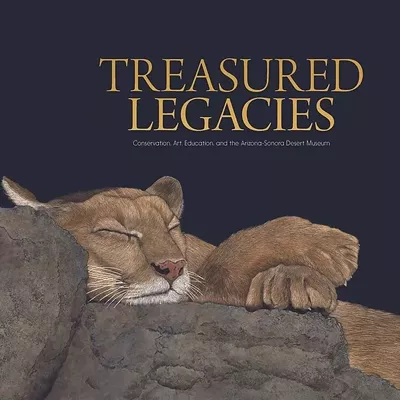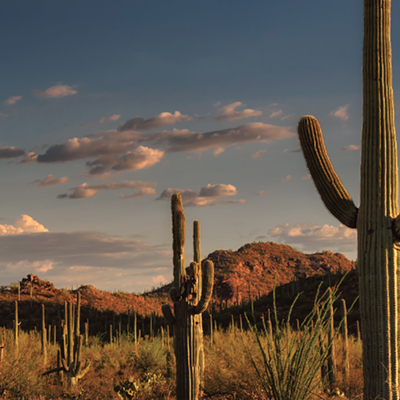It's cruel of W.C. Jameson to bring out a book called Lost Mines and Buried Treasures of Arizona at this moment. For one thing, his information derives from legends and lore—you know, stories passed down "from generation to generation," offering less validity than a Wikipedia entry. Very often, there's little, if any, evidence that the people who stumbled into and then misplaced huge stashes of gold and silver in Arizona even existed.
Of course, Jameson's complete disregard for indexing and citations suggests he wrote this book to stoke the imaginations and not to put an exact X on anybody's map. It's a big tease to tempt readers with wealth we can only read about but never touch. With a sluggish U.S. economy, Jameson's book will likely send more than a few gold diggers in search of, say, "Vekol's silver ingots."
Who can blame them, though, given the alluring narratives? Take, for instance, the chapter on "Geronimo's Gold." In it, we learn that the infamous Apache leader found a mine left by Spanish church officials. Geronimo used the gold to finance arms for his followers, but died before informing anyone where the stash was hidden:
Geronimo swore his warriors to secrecy and told them anyone who revealed the location would be punished by death. Today, it is said that a few elderly Apaches are still alive who allegedly know the location of this mine, but refuse to tell it for fear of reprisal. They claim there are hundreds of gold bars still stacked just beyond the entrance to the shaft. They also claim no white man will ever find the mine.
If that's not a challenge, nothing is.
It's worth discussing the chapter titled "The Huachuca Canyon Treasure." Here's a story genuine enough to have inspired the U.S. Army to hire a private California treasure-hunting company to search for a lost cache. It all began in the months before World War II, with a communications grunt named Robert Jones who was serving at Fort Huachuca. During a hike, he survived a 30-foot fall into a shaft and discovered something incredible when a friend dropped a light to him in the pitch black:
Jones explored the room with help from the dim illumination of the flashlight. Stacked along the walls, he found what he determined were 20-inch bars of gold and silver, at least 200 of each. He picked up one of the bars and estimated that it weighed close to 50 pounds. ... Near the center of the chamber, Jones found two large wooden boxes—each, he said, "as big as three washtubs." One of them was filled to the top with gold nuggets, and the other, half full, contained gold dust.
Naturally, with war imminent, his superiors refused to let him explore the shaft further. After being wounded in combat and discharged, Jones spent years in physical rehab before returning to Huachuca. With the Army's permission, he dug around, but the manmade shaft had collapsed on itself, filling with impossible-to-dislodge debris. Jones died two years after the failed excavation attempt, and the Huachuca Canyon remains unearthed.
Tucsonans will get the biggest kick out of the book's "Southeast" section, where they'll learn (or once again hear) about local lore like "The Lost Iron Door Mine." Here, the Catholic Church and Spain during the 1700s ran a gold-mining camp in the Santa Catalina Mountains via the Jesuits. That is, until Spain expelled the order, which left the Jesuits no choice but to hide much of their accrued wealth 17 miles from the center of downtown Tucson. It wasn't until the early 20th century that an old man, who was opening a grocery store on North Sixth Avenue, found a parchment with directions to Escalante Mine, located in a natural landform called La Ventana, or "the Window." In that spot, there's said to be a gold mine sealed behind an iron door. Military detachments and prospectors were thwarted thanks to Apaches. But as recently as the '90s, a wandering backpacker saw something interesting: "As he lay in his sleeping bag, he watched as a swarm of bats exited an opening in the nearby cliff face. The next morning, he walked over to the hole and discovered it to be an ancient mine shaft." Too bad he could never find it again.
Despite a lack of concrete information, Jameson's Lost Mines is a fun summer read that provides a wealth of information about Arizona's treasure-hunting history—and it may convince you to purchase a metal detector and some camping gear.







